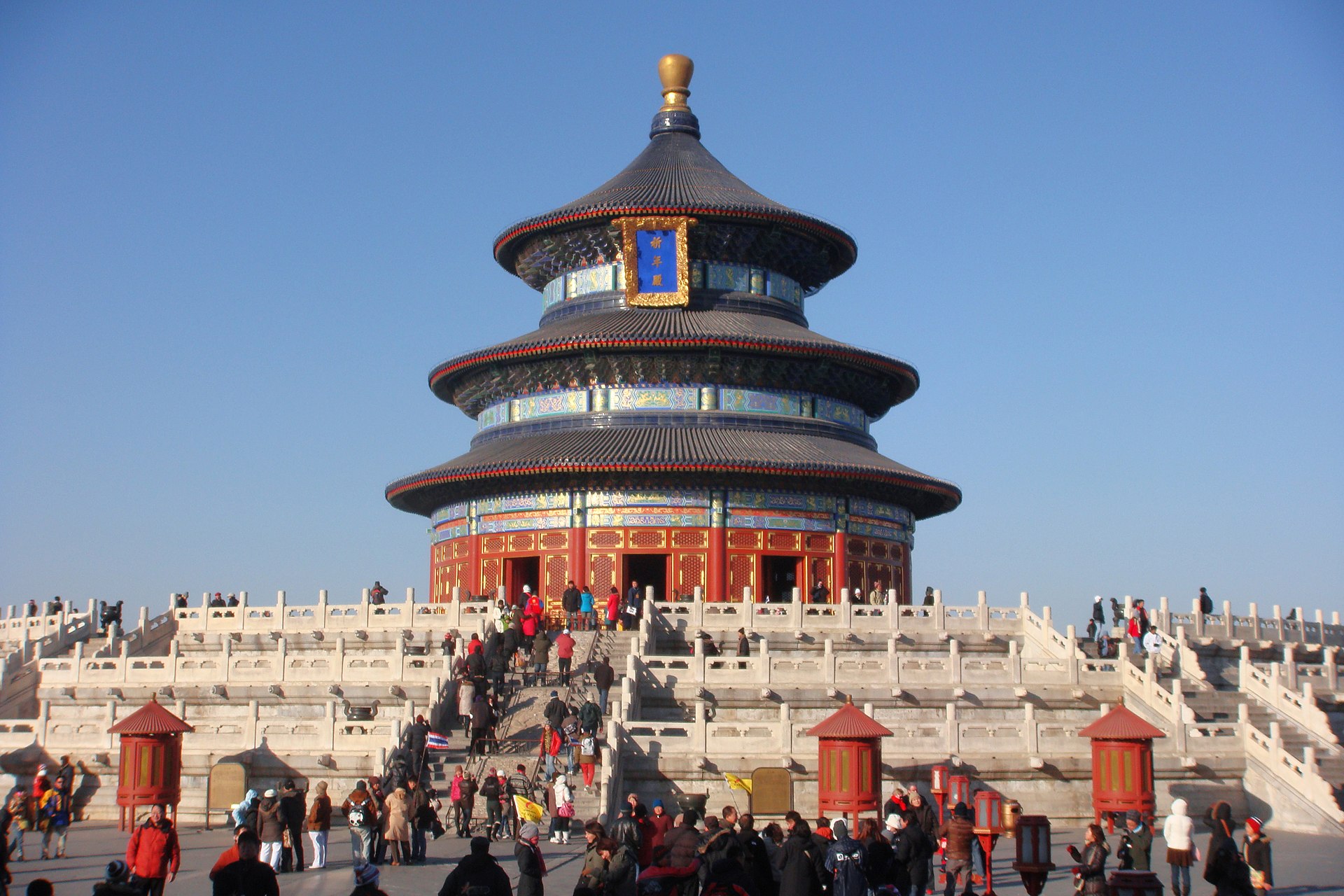The Temple of Heaven in Beijing, built in the 18th year of Yongle in the Ming Dynasty, is a stately building that was used by the emperors of the Ming and Qing dynasties to make annual prayers to Heaven. The entire area is four times larger than the Forbidden City. Designed with the concept of “respecting the heavens and the gods,” the architectural skills of the Temple of Heaven show the traditional Chinese peoples’ great respect for the heavens.
The Temple of Heaven
The main building of the Temple of Heaven is circular, symbolizing the sky and universe; the main hall is covered with blue glazed tiles, symbolizing the blue sky. The Temple of Heaven has six heavenly gates. The Vermilion Steps Bridge connects the main buildings, such as the Circular Mound Altar, the Imperial Vault of Heaven, and the Hall of Prayer for Good Harvests. The Vermilion Steps Bridge, also called Shinto or God’s walkway, is 60 meters long, 29 meters wide, and 1 meter high at the south end. It slowly ascends from south to north, symbolizing how the road connects with the heavenly palace.
The Circular Mound Altar was the place where the emperor held a ceremony to worship Heaven. The circular mound has three floors, each with nine steps. The number of countertops on each level to the stone steps, slabs, and pillars of the altar is in nonuplets, through the repeated application of the “nine” to emphasize Heaven’s supremacy.

Standing on the Circular Mound Altar, the wide-open view makes people seem to be able to touch the sky with their hands and feet off the ground as if walking in the air. Speaking on the Heaven Heart Stone on the Circular Mound Altar in a soft voice is greatly amplificated, helping people communicate with the heavens.
The Hall of Prayer for Good Harvests is to hold the ceremony of praying for good harvests. This round palace, painted in gold and green, is 8 meters high and 2 meters in diameter, with triple eaves, condensed layer upon layer into an umbrella shape. It is majestic, providing an aura of being uplifted to the heavens themselves.
The big pillars and openings in the hall symbolize the four seasons of the year, twelve months, twelve hours of the day and night, and the constellations in the sky, giving the impression of stepping on clouds and visiting the fairy pavilion when stepping into the altar. When stepping out of the gate of the Hall of Prayer for Good Harvests and following the corridor to look southward, one will see multiple porches, the boundless and magnificent sky and earth, as if in the heavens.

The Temple of Heaven is famous for its tranquillity and profound environment and embodies its artistic conception in several aspects, such as high, round, and bright. High, namely sublime, expresses the vastness and loftiness of the sky and shows the supremacy of “heaven” to feel the greatness of Heaven and the smallness of oneself. For example, the Hall of Prayer for Good Harvests is three meters higher than the Hall of Supreme Harmony in the Forbidden City. Low walls are set around the Circular Mound Altar to set off the main building; the whole outline of the Hall of Prayer for Good Harvests and the Circular Mound Altar is directly connected to the sky as if it is high in the air.
Round refers to not only the shape of the circle, but also a symbol of peace, containing all things in the universe, and going full circle. Bright is a realm of nobility and freshness. For example, the primary color of the Temple of Heaven is blue overall. Whether it is the sky, the woods, or the glazed tiles, they are all blue, which is in harmony with the blue sky. The trees and large areas of vegetation are lush and flourishing.
The architectural design of the Temple of Heaven integrates ancient philosophy, history, mathematics, mechanics, esthetics, and ecology, successfully expressing the philosophy of “harmony of man and nature.”
Translated by Joseph Wu and edited by Helen







